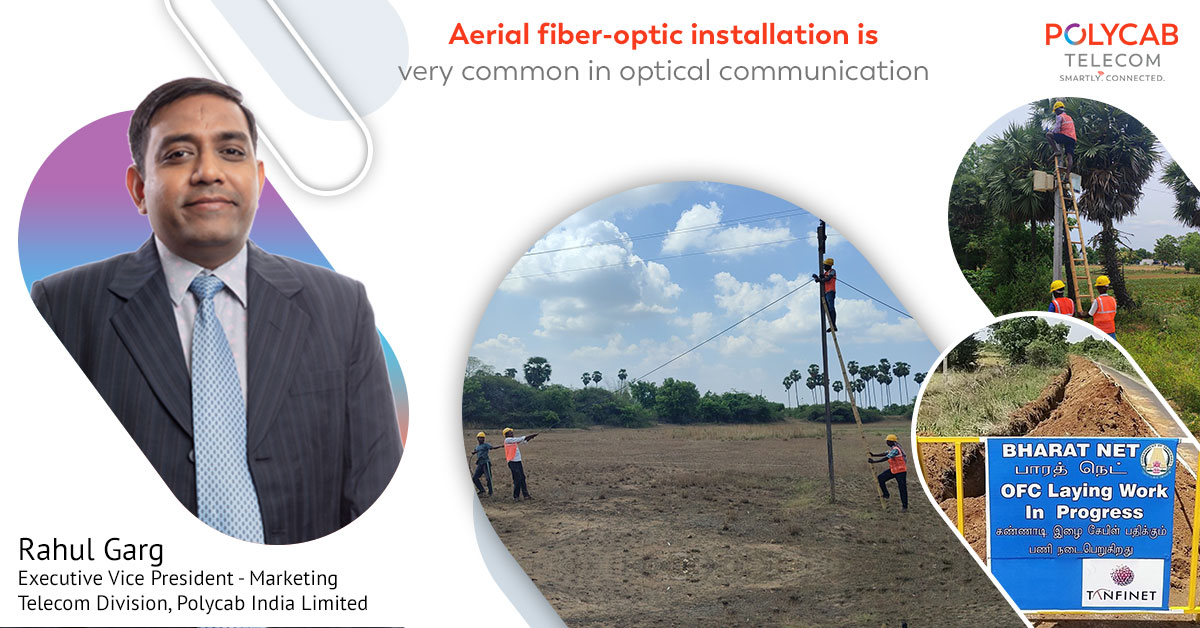Undeniably fiber-optic construction bears the promise of a flexible, scalable and full-service network platform, enabling the service-providers to transmit massive amounts of information at record-breaking speeds, with minimal interference. Fiber-optic networks are constructed through the placement of Optical Fiber Cables (OFCs) both, in underground and aerial ways. In underground construction, OFCs are laid in a conduit system, buried through blowing, trenching, jack and bore, multi-directional bore or directional bore techniques, whereas OFCs are placed on top of utility or telephone poles in the aerial fiber-optic construction.
We can even see the aerial OFCs hanging on the poles in our daily lives. With aerial cable installation, we can do away with digging up roads to bury cables or ducts and use existing utility pole infrastructure, which makes it a highly cost-effective option. Aerial OFCs can be normally classified in two types, i.e. Catenary Wire and Self-supporting. A Catenary Wire is regular outdoor loose tube cable that can be helically lashed to a messenger or another cable, whereas commonly found Self-supporting aerial cables are designed for easy and one-step installation. There are different kinds of Self-supporting aerial OFCs in the market. Aerial cables have shorter installation-time than the underground ones. Addition or modification in cabling can be done easily. Aerial cables are mainly used for secondary trunk level and below and are typically suitable for areas with flat terrain and small undulations. But, due to their exposure to natural environment and disasters and mechanical strength-weakening in themselves, the failure rate of aerial OFCs is higher than the pipeline or directly-buried cables. Aerial OFC-installation has to be definite in terms of safety and expediency. RoW-permissions from civic authorities are necessary to go ahead. Outlining of responsibilities has to be done considering thorough planning for traffic-control, proper equipment-usage and identification of potential job-hazards.
Polycab Telecom, a division of Polycab India Ltd., is best-known for the delivery of major telecom infrastructure projects, with capabilities to roll out large telecom Infrastructure projects for both, Broadband and Wireless Networks. We’ve been regularly delivering our services for BharatNet, world’s largest rural broadband project, wherein we achieved back-to-back timely completion of projects in Gujarat and Bihar. Working currently for another project under BharatNet Phase-II in Tamil Nadu, we’re in the process to lay OFCs for around 16,500 kms, with almost 85% being aerial and the rest underground, as mandated by the TANFINET, a Special Purpose Vehicle (SPV), instituted by the state.






